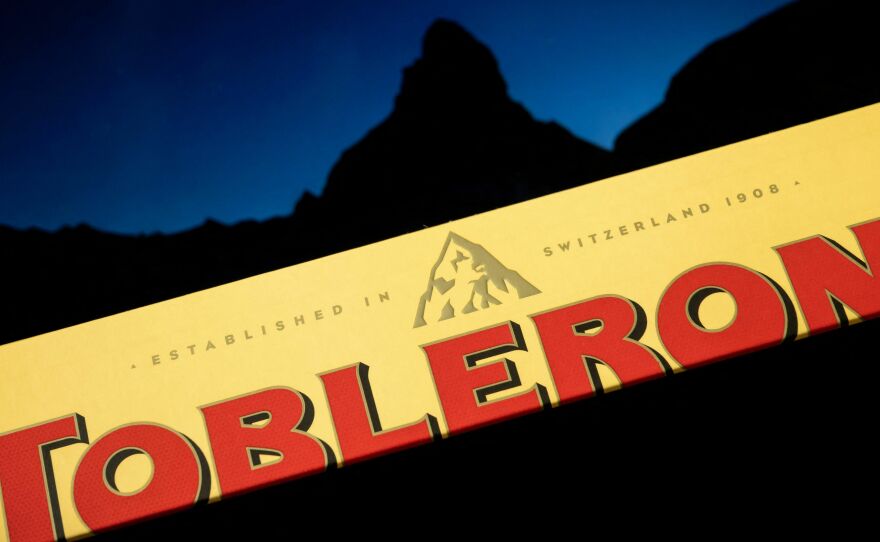Updated March 6, 2023 at 10:28 AM ET
Toblerone chocolate bars are famous for their triangular peaks. But they will soon be losing their most famous one: the image of the Matterhorn prominently displayed on their packaging.
Toblerone was created in the Swiss city of Bern in 1908 by Theodor Tobler, with its distinctive shape reportedly inspired by his mountainous homeland and the Matterhorn in particular.
It has called itself Swiss-made ever since — until now, thanks to the country's strict requirements governing which products can legally say that.
Mondelez International, the U.S. company that owns Toblerone, is shifting part of its production to Slovakia starting in July, in a move announced last year aimed at cutting costs.
That appears to violate Switzerland's "Swissness Act," which since 2017 has required products to meet certain criteria in order to use Swiss symbols (like the Swiss cross) or call themselves Swiss-made.
Those regulations aim to protect the credibility and value of the coveted Swiss label, its government explains, citing studies that show the value added by the Swiss branding can represent as much as 20% of the sale price for certain products — and up to 50% for luxury goods — compared to those from other places.
When it comes to food products specifically, at least 80% of raw materials must come from Switzerland, and 100% for milk and dairy. The essential processing must also be done inside the country, with few exceptions (and Toblerone chocolate is evidently not one of them).
"For legal reasons, we have to adapt our packaging to the Swissness legislation and, among other things, remove the Swissness notice on the front of the Toblerone pack," a Mondelez spokesperson told NPR over email. "The Toblerone bars are still and will continue to be produced in Switzerland."
That includes replacing the phrase "of Switzerland" with "established in Switzerland" on the label, and scrapping the iconic Swiss mountain that's graced its boxes since 1970.
The company has yet to unveil its new design, but says it will still pay homage to its Alpine roots with "a modernized and streamlined mountain logo that is consistent with the geometric and triangular aesthetic."
It will also keep its "famous hidden bear," a tribute to the bar's birthplace of Bern, which you can see if you look closely at the shadows of the Matterhorn (though many people usually don't).
"The other changes to the packaging also reflect Toblerone's heritage," the company says. "The font and brand logo are inspired by the Toblerone archives and include the signature of our founder Tobler."
While the move to Slovakia comes at some cost, the company stresses it has also increased investment in its factory in Bern over the last several years. It believes that will increase production of its 100-gram bars in the "medium to long term," ultimately producing 90 million additional bars per year.
"Berne plays a central role in Toblerone's history and will continue to do so in the future," it adds.
And the confection itself, a chocolate-honey-almond nougat situation, appears to be staying the same.
That hasn't always been the case: In 2016, customers in the United Kingdom slammed the company for widening the gaps between the chocolate bar's peaks, a decision it said had been made to combat the rising cost of ingredients. It brought back its original shape two years later.
Copyright 2023 NPR. To see more, visit https://www.npr.org. 9(MDAzMjM2NDYzMDEyMzc1Njk5NjAxNzY3OQ001))






